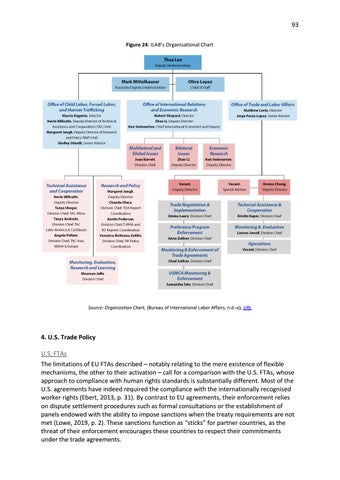93 Figure 24: ILAB’s Organisational Chart
Source: Organization Chart, (Bureau of International Labor Affairs, n.d.-a), URL
4. U.S. Trade Policy U.S. FTAs The limitations of EU FTAs described – notably relating to the mere existence of flexible mechanisms, the other to their activation – call for a comparison with the U.S. FTAs, whose approach to compliance with human rights standards is substantially different. Most of the U.S. agreements have indeed required the compliance with the internationally recognised worker rights (Ebert, 2013, p. 31). By contrast to EU agreements, their enforcement relies on dispute settlement procedures such as formal consultations or the establishment of panels endowed with the ability to impose sanctions when the treaty requirements are not met (Lowe, 2019, p. 2). These sanctions function as “sticks” for partner countries, as the threat of their enforcement encourages these countries to respect their commitments under the trade agreements.













